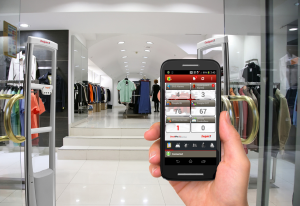I read a recent article by the people at Checkpoint, titled Visual Merchandise Protection Helps Keep The Customer Coming Back. There were several great points made, but some really spoke to me. I am a store manager for a small retail pharmacy and I’ve been with the company for nearly fifteen years. I have seen the transformation in our journey of shrink reduction and ways to stop shoplifting. We’ve always had Checkpoint Systems installed, but over time we’ve introduced new tools to the stores. Those changes have made major differences and improvements to my daily activities and my work day.
Visual merchandise protection, or VMP, is the new way to attract honest cash paying customers to your store and help make your store less appealing to criminals. In the old days stores would conceal Checkpoint Labels inside the packages and shoplifters would just take the chance on getting away. Hiding the labels was a way to catch a thief, not deter one. That’s the genius of VMP. You and your staff want your efforts to be seen.
First of all, when inventory is all locked up behind glass cases, you take away from the shopping experience. Customers can’t pick up what they want, actually turn it over in their hands, and feel the connection to the item if they can’t touch it. Store managers should know their demographics and what their customers want. I know in my old store in a lake community, wine, electronics and cosmetics needed to be readily available for customers to pick up and browse. In my inner city location, many of those things needed to have extra added protection. There was a lot of foot traffic and the store was a hot spot for boosters and simple petty theft. But, I did not choose to keep everything behind the counter for customers to have to ask for them. I used tools like Alpha Keepers and Spider Wraps on high retail items that had the potential to be targeted for theft. I installed Bottle Locks on all the top shelf wines and spirits we sold.
If you’ve ever caught a thief and pressed charges, you’ve likely also been through the hassle of the court system over it. Even if they get caught red-handed, the thief is still entitled to a trial in district court in most states. They ask for a continuance over and over, and the company keeps paying to send someone to court until they finally go before a judge. That’s one of the things that makes VMP so cost effective. Checkpoint Labels and Alpha Keepers send a clear message that the store takes security seriously. These tools are known to criminals and when interviewed, many have said they would rather steal from stores that don’t employ them on their inventory. The labels are placed directly on the package, and since most customers are familiar with them they do not detract from the brand’s image. Your staff does need to ensure that the Checkpoint Labels do not cover vital information like expiration dates, directions for use, and other pertinent details about the product. When using Alpha Keepers, the employees should know that the product should fit comfortably in the box and should never crush or damage the product appearance. VMP is intended to keep your inventory in stock for the customer and keep those shoppers coming back to shop your store. The strategy plays an important role in helping your loyal shoppers feel welcome and safe in your building.
For more information about Checkpoint and Alpha products, contact us or call: 1.770.426.0547

 Shoplifting costs the retail industry million of dollars daily.
Shoplifting costs the retail industry million of dollars daily. 



